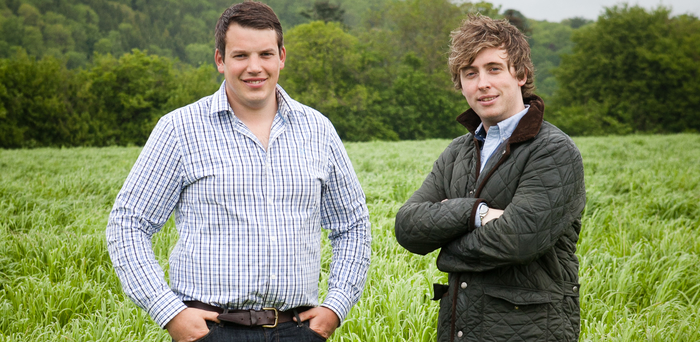Neil Hammerton, CEO and co-founder of Natterbox, shares six tips on how to start a business in an unknown field.
The mentality of ‘sticking to what we know’ is encouraged by many successful founders and business owners, such as Lord Sugar urging aspiring entrepreneurs to stick to the fields they are familiar with.
But is this really the best way to achieve true innovation, or is it just the easiest route? How will we know what we can achieve in a new field if we never try?
In fact, it can be argued that only sticking to what we know won’t lead us to achieve greatness. As Richard Branson once said, ‘If someone offers you an amazing opportunity and you’re not sure you can do it, say yes – then learn how to do it later!’. Risk-taking is a crucial part of any successful business and its role in the conception of a new business is no different.
Balance is crucial and, as much as we all need those who play it safe, we also need those who push boundaries in unknown areas and take risks where others might not. Only then will we see and be given the opportunity to be a part of significant development and innovation – changing people’s lives and challenging what we’re capable of.
I know from experience that starting a business in a new field is a scary prospect, but the rewards can be amazing. If I were to give advice to anyone embarking on the same road now, the following six tips would be at the top of the list.
Challenge the status quo
There is always another way. Everyone has their own process for doing something, but not all of them can be right. In fact, none of them are probably ‘right’ if they attain the same end result – but some can certainly be more efficient.
If you believe a process can be streamlined, or even that a greater result can be achieved, then figure out how. Naturally it can be hard to change the status quo but being brave and willing to take risks is what will make you stand out from the crowd.
Learn the answer, don’t pretend to know it
We all have to begin somewhere. You won’t be expected to know everything about running a business or the industry that you are entering into at the drop of a hat.
There’s nothing wrong with not knowing the answer and pretending you do could put you in a difficult situation – perhaps not immediately but certainly in the future.
Our increasingly digital world means that everything is moving at 100 miles an hour, whether that’s changes to regulations, customer demands, the political environment or available resources. Keeping on top of that change is a huge challenge so ask questions and look to others for advice and above all, be willing to use and learn from the tools available.
Trust your gut
Seeking help from experts in your new field will be essential to your success – but seeking advice and acting on it are two different things.
For example, many believe that securing venture capitalist funding is a priority for any new business – but that’s not necessarily the case; it’s just one of the many options available to you. It’s important you listen to and consider others’ advice, but what’s crucial is that you trust your own instinct and choose the right option for you. No one will ever achieve true innovation by following someone else’s formula.
Leave traditional recruitment methods behind
Once your business gets its feet off the ground, chances are you are going to need more hands-on deck. Recruiting can be a hard slog and expensive, so don’t make it harder on yourself by narrowing your options. Remember that an Oxbridge degree and impressive qualifications aren’t the be all and end all.
Spread the net wider and extend the opportunity to those that can offer more than simply good grades – loyalty, passion and drive go a long way in any business.
Be prepared for bumps in the road
Everything around us is constantly changing, from market conditions and consumer demand, to quick-paced developments in technology. With so much shift in working conditions, no business will ever stay the same.
Sometimes a small tweak to the business trajectory will be enough to keep up, but at other times, a bigger adjustment will be necessary. Whatever the scenario, with the right skills and staff, you shouldn’t be afraid to change tack; it simply comes part and parcel of owning a business and working in any new field.
Aim high
Whatever field someone decides to pursue, new or old, everyone has the potential to achieve their best possible potential – but only if working toward the right goals. Granted, setting attainable goals can be rewarding when achieved, but it’s the ambitious goals we set ourselves and work towards that will drive us forward to reach our true potential.
There will always be barriers in the way of achieving our goals – but we can get so much further toward achieving them if we actually strive to. Only working toward sub-par goals simply limits what we are capable of.
Setting up a new business is never going to be plain sailing, whether you know the field or not, and regardless of how many advice columns you read. All you can do is listen to the advice of others who have been in the same position and learn from their mistakes. Most importantly though, you should always be willing to take risks – only when you make your own mistakes to learn from will you truly be on the right path to achieving real innovation.
Jamie McInnes (right) co-founded Hectare Agritech with Dan Luff (left). Anna Jordan asks him about the challenges of working with clients that are less digitally inclined.

The biggest challenge for me lay in the uptake of technology within the world of farming. I come from a tech background, and usually in that world, if you create a solution that you know will solve a business-critical issue, people will buy into it.
But while farming is one of the biggest adopters of technology in terms of managing crops or animals, when it comes to business processes, things are different. Buying and selling livestock and grain is still carried out via face-to-face conversations, handshakes and cheques. It’s very traditional and farmers can be reticent to change the way they do things.
So, we had to be sympathetic to this, and understand how farmers work. We had to speak to our user base and understand how to talk to them, and how we could convey that we’re solving a real problem for them.
Changing trading behaviours
Our two marketplaces, SellMyLivestock and Graindex, allow farmers to buy and sell livestock and grain online. They are based on fundamentally changing trading behaviours in the industry.
This meant that in the beginning stages, we needed to think and act quickly to feedback. My developer background helped immensely because I could tweak our platforms at any point.
In fact, I still do. We can be reactive to any changes in the way our customers are using the platform, without needed to outsource. Our competitors at the time couldn’t compete with this because they had to buy in their developer expertise from the outside, whereas I can tap straight into our platforms and tweak as required.
Being a newbie
Our naivety helped us immensely. I married into a farming family and founded the company alongside my friend Dan Luff, a cattle farmer.
Having that outside tech perspective meant we were able to be accidentally disruptive. We did things that probably wouldn’t have happened had we been controlled solely by people within farming. This helped us to have, and maintain, an unconstrained attitude to innovation, and it’s what we believe gives us our competitive advantage.
Our payments service, FarmPay, is a good example of this. Challenging the notion that farm trading had to be reliant on personal trust, and instead building trust into the process itself is not something that I think we would have done had we been incumbent in the industry.
Finding the right people
We knew that if we were going to truly crack the farming sector, we needed to get in front of people who had influence. That’s why we set out to pitch to some of farming’s big hitters and welcomed them on to the advisory board of Hectare. One of these prominent figures is Sir Jim Paice, former Minister of State at the Department for Environment, Food and Rural Affairs who became a big advocate, investor and now advisor.
Sir Jim, as well as our other board members – Adam Quinney, head of beef and lamb at industry body the AHDB; Liz Bowles, head of farming at the soil association; and Amy Jackson, an agriculture PR specialist – were able to provide the inside knowledge we needed to ensure we could deliver a product that would be picked up and used quickly.
The good and bad of not knowing
Our lack of knowledge absolutely limited us when it came to goal setting. It was manic at the start, and everyone had to grab an oar. Our initial product was bloated and over complicated, too, and there’s plenty of things we’d do differently now.
I believe one of our biggest strengths lies in knowing what we don’t know, and then seeking out the knowledge that we need. Sir Jim is one of the many respected industry names who sit on our advisory board, who saw our initial promise, and helped us grow.
We’re reinventing farm trading, and now have a compelling offering that we have the majority of the farming industry buying into. Farmers have traded £55 million in outputs through us in the last twelve months, growing at 120 per cent year-on-year, and we now have over 37,000 users, representing over 25 per cent of UK farms.
We’re taking those as great signs that we’re doing something right. There are always going to be a few bumps along the way, but we’ve learned from our mistakes and haven’t let our lack of knowledge limit us for long.
Katy Alexander used to work in scientific publishing before she moved into educational card games inspired by, and to inspire, her daughter. She talks to Anna Jordan about launching The Remarkablz.

There were a number of challenges that I had to overcome when making the move from scientific publishing to educational card games. These included product development, user testing and thinking through potential customer segments.
A huge challenge was the content of the cards. The stories of female scientists, engineers and entrepreneurs are simply not as well understood. The info available through desk-based research was limited, making the underlying research very challenging.
I used existing science, technology, engineering and maths (STEM) networks that I have to find talented people and really build credible content that includes diverse role models from across the globe.
I also had to ensure I understood not just the STEM sectors (which was my background) but I needed to understand the educational entertainment space. I needed to understand the market and the competition within the market.
Helped by previous experience
I have worked in STEM publishing and technology for 15+ years now and have had exposure to some amazing people, technology and problems.
This experience has helped me to learn about many of the superheroes that feature in Top Quarkz, the first game under The Remarkablz brand. I had contact with an international network of scientists and technologists who helped me with exciting ideas for characters.
I have also been fortunate that some of the work I have done with digital science has enabled me to highlight knowledge about talented female scientists or scientists from diverse ethnic backgrounds through Wikipedia hackathons – we held one last month.
Another valuable aspect of my day job is that I have learned about the underlying issues that prevent young girls, in particular, from going into more technical disciplines.
There is a lot of good work happening to address university choices about fields of study and corporate recruitment issues. However, I’ve also seen that the way STEM subjects are taught to children. The role models they see from the age of three show them what society says is possible for different genders.
Crafting the characters
Creating The Remarkablz with my daughter was a wonderful experience: encouraging her to engage with the content, hiding visual clues about their life and discoveries in the drawings and experimenting with the gameplay made it memorable.
As my experiment evolved, I started to receive positive feedback and interest in the game. Coming fresh to a product or industry can be liberating in some ways: I had no preconceived notions of how I should approach the idea much less the product design, production process or go-to market.
Early on in the process of designing the first prototype, I was fortunate to hear an anecdote from someone in the games industry. He had shared a considerable amount of insight into the game design process as he had experienced it through his decades of work. He followed with a caveat, ‘Just keep in mind that most games that become big are not from the game industry so understand your market and what drives them.’
Coming fresh to the problem that we’re looking to solve means we can contribute an offering that enables us to have an outsized impact.
Learning about the industry
I am fortunate that many of my friends work in the retail, games and legal fields.
The main areas of advice they had were around setting up and managing a direct-to-consumer retail product, learning about how retailers approach stocking decisions and the negotiations that sit around that decision and relationship. I also learned about how to protect the intellectual property that I have been creating and understanding the unique nature of the educational entertainment space, which is a combination of two complex consumers: children and their parents.
I have focused primarily on two different sets of goals – near-term, measurable goals related to different parts of the business and long-term, aspirational goals.
For the near-term goals I focused on what I considered to be the basics of firming up the product, determining how to produce it and experimenting with how we could reach customers.
As an example, I spent a lot of time testing the product to ensure I was creating something that children enjoyed playing with and that parents would view as valuable. While the sample set wasn’t as large as I would have liked, the user testing gave me confidence that I was on the right track to satisfy that goal.
The next focus was nailing down the production process and ensuring I could manage the supply chain – identifying potential suppliers, learning how they work, determining costs and figuring out how best to start producing as I was starting to build the brand.
From a goal perspective, it was very simple: find producers we could trust, narrow that down to one supplier we would run with, ensure delivery of a high quality product and be able to adjust quickly as feedback came in.





